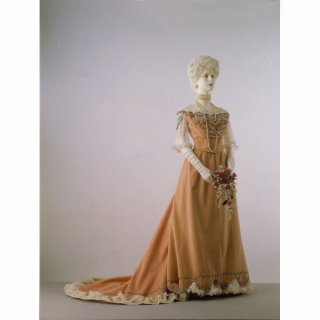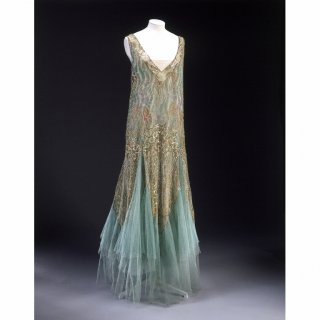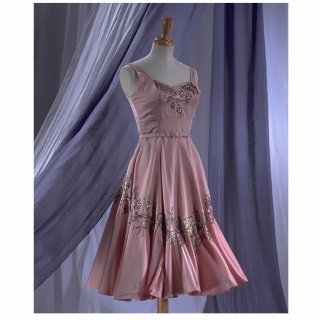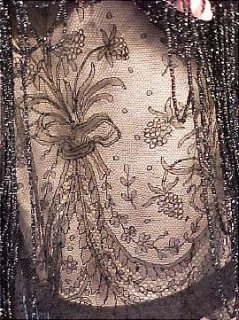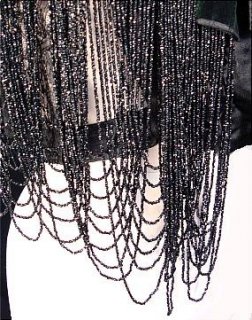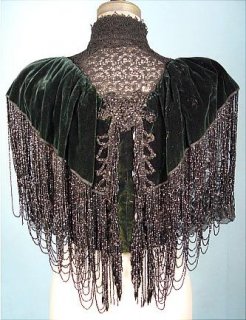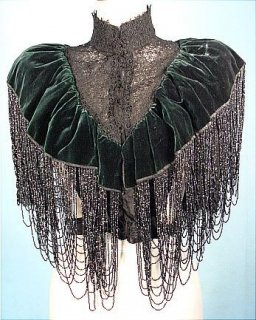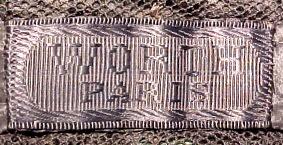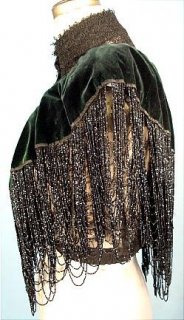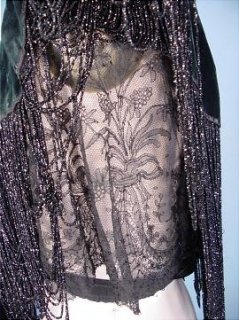DosViolines
far from home...
- Joined
- Aug 21, 2005
- Messages
- 3,212
- Reaction score
- 12
Dress
ca. 1889
Wool, with figured satin panels, edged with silk braid
With its minimal bustle and strong emphasis on the sleeves, this day dress illustrates the smoother silhouette that began to appear in the late 1880s. It is said to have been worn by Cara Leland Huttleston Rogers of New York, later Lady Fairhaven.
The bodice is waist length, panelled with satin and edged with black moiré ribbon. It is trimmed at the back with a made-up bow with long pendant ends. The dress fastens at the shoulder over a boned, green silk bodice lining. The sleeves are long with a high pleated shoulder. Collar and cuffs are faced with gold beaded tulle. The skirt has a slightly draped front, with the back flared and arranged in deep pleats. It is mounted over a green silk petticoat, and boned and taped to a bustle shape at the back. The skirt may have been altered and have lost a side panel.
A machine-woven label 'Worth Paris' has been stitched to the waist tape. Charles Frederick Worth (1825-95) was a celebrated Parisian couture dressmaker. He was born in 1825 in Bourne, Lincolnshire, and started working at the age of 12 in a draper's shop in London. Eight years later he moved to Paris, where he opened his own premises in 1858. He was soon patronised by the Empress Eugenie and her influence was instrumental to his success.
Made-to-measure clothes from Worth, as from the other great Parisian fashion houses, were an important symbol of social and financial advancement.
vam.ac.uk


